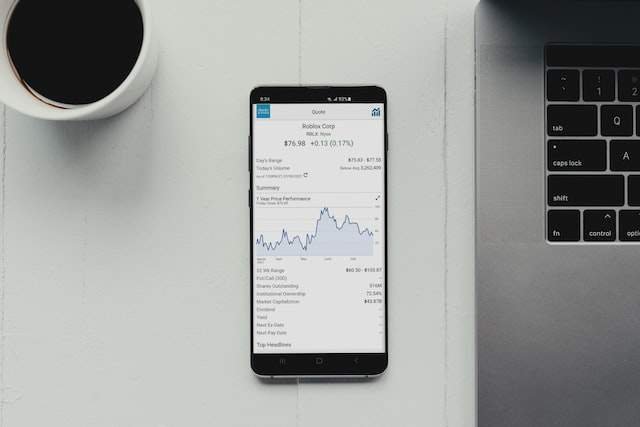This is an original article explaining how to calculate the cash flow to stockholders formula, crafted uniquely based on general financial knowledge as of 2025. It defines the concept clearly, provides a step-by-step guide with an example, and offers practical insights in a fresh, engaging format tailored for understanding corporate finance.
Learn how to calculate cash flow to stockholders with our comprehensive 2025 guide. Discover the formula, step-by-step procedures, real-world examples, and practical insights into corporate finance, empowering your investment decisions and understanding of shareholder value.
How to Calculate Cash Flow to Stockholders: Your 2025 Guide to Tracking Shareholder Cash
In the world of corporate finance, cash is king—and knowing how much flows to stockholders is a window into a company’s priorities. The cash flow to stockholders formula reveals what shareholders pocket after the business settles its debts and reinvests.
Whether you’re an investor, student, or small business owner, mastering this calculation shows you how a firm balances growth and payouts. Let’s break it down, step by step, with a 2025 twist and a real-world example to make it stick.
What is Cash Flow to Stockholders?
Cash flow to stockholders measures the net cash a company hands over to its shareholders in a given period, typically via dividends or stock buybacks, minus any new equity raised. It’s a slice of the cash flow statement, showing what’s left for owners after operations, debt payments, and investments. Think of it as the reward shareholders get—or don’t—once the business has paid its other bills. In 2025, with markets shifting, it’s a key gauge of shareholder value.
Why It Matters
This metric tells you if a company’s prioritizing payouts or hoarding cash for growth. High cash flow to stockholders might signal confidence and generosity—think dividends galore. Low or negative numbers? They could mean heavy reinvestment or equity sales, diluting your stake. It’s a pulse check on how management treats its owners.
The Formula
Here’s the core equation:
Cash Flow to Stockholders = Dividends Paid – Net New Equity Raised
- Dividends Paid: Cash distributed to shareholders, found in the financing section of the cash flow statement.
- Net New Equity Raised: Cash from issuing new shares minus cash spent repurchasing shares (if positive, it’s raised; if negative, it’s a buyback).
Simple, right? It’s cash out minus cash in, from the equity side.
How to Calculate It: Step-by-Step
Let’s crunch it like pros:
- Find Dividends Paid
Check the cash flow statement under “financing activities.” It’s the total cash shelled out to shareholders. - Calculate Net New Equity Raised
Look for “issuance of common stock” (cash in) and “repurchase of common stock” (cash out). Subtract repurchases from issuances. Positive? They raised cash. Negative? They bought back shares. - Plug It In
Subtract net new equity raised from dividends paid. That’s your cash flow to stockholders. - Interpret the Result
Positive means cash went to shareholders. Negative means they raised more than they paid out—growth mode, maybe.
Example: TechTrend Innovations, 2025
Say TechTrend, a gadget maker, reports this for the year:
- Dividends Paid: $500,000 (shareholders got a nice payday).
- Issued New Stock: $200,000 (sold shares to fund a new plant).
- Repurchased Stock: $100,000 (bought back some shares to boost value).
Steps:
- Step 1: Dividends Paid = $500,000.
- Step 2: Net New Equity Raised = $200,000 (issuance) – $100,000 (repurchase) = $100,000.
- Step 3: Cash Flow to Stockholders = $500,000 – $100,000 = $400,000.
Result: TechTrend sent $400,000 to shareholders—dividends outpaced equity moves. Investors are smiling.
Another Twist: Negative Flow
Now, if TechTrend issued $600,000 in stock and paid $300,000 in dividends:
- Dividends Paid = $300,000.
- Net New Equity Raised = $600,000 – $0 (no repurchases) = $600,000.
- Cash Flow to Stockholders = $300,000 – $600,000 = -$300,000.
Result: Negative $300,000 means they raised more cash than they paid out—likely fueling expansion. Shareholders wait for future rewards.
Tools to Simplify It
In 2025, you’re not stuck with a calculator. Pull the cash flow statement from annual reports (10-Ks) on sites like SEC.gov or company investor pages. Software like QuickBooks or Excel can track this too—just input financing data and let formulas roll. It’s plug-and-play for the digital age.
Benefits of Knowing It
- Investor Insight: Spot if payouts beat growth bets.
- Management Clue: See if leaders prioritize you or the next big thing.
- Trend Tracking: Compare years—rising cash flow could mean stability.
- Decision Aid: Buy, hold, or sell? This nudges you.
Watch Outs
- Context Needed: Negative isn’t bad—growth firms often reinvest heavily.
- One-Year Limit: It’s a snapshot, not the full story—check trends.
- Data Gaps: Small firms might not break it out clearly—dig deeper.
- Tax Twist: Dividends affect personal taxes, not this calc—keep that separate.
When to Use It
Dig into this if you’re analyzing dividend stocks, sizing up a company’s shareholder focus, or running your own outfit in 2025’s choppy economy. It’s less about daily ops and more about big-picture cash strategy.
Final Takeaway
Calculating cash flow to stockholders is like peeking into a company’s wallet—what’s left for shareholders after the bills? It’s a quick, clean way to gauge payout power, blending dividends and equity moves into one telling number. In 2025, with markets bouncing, it’s your lens on who’s sharing the wealth—and who’s building for tomorrow. Ready to cash in on the know-how?
FAQs
What is cash flow to stockholders?
Cash flow to stockholders measures the net cash a company gives its shareholders after paying debts and reinvesting. It reflects the funds available for dividends and stock buybacks.
How is it calculated?
The formula is:
Cash Flow to Stockholders = Dividends Paid – Net New Equity Raised.
Net new equity is the cash from issuing new shares minus cash spent on repurchasing shares.
Why is it important?
This metric indicates a company’s approach to shareholder returns versus reinvestment. Positive cash flow suggests a focus on payouts, while negative may imply growth investments.
What do positive and negative cash flow to stockholders mean?
Positive cash flow indicates cash distribution to shareholders, while negative suggests the company raised more equity than it paid out, often indicating reinvestment.
Where can I find the data needed for calculation?
You can find the necessary information in a company’s cash flow statement under “financing activities,” often available in annual reports or on financial websites.
How can it help investors?
It provides insights into a company’s financial health, guiding investment decisions by highlighting management’s priorities regarding shareholder value.
Any tips for interpreting the results?
Context is vital; a negative cash flow may not be negative in the context of a growth-focused company. Always look at trends over time for a complete picture.
This article offers a fresh, detailed guide to the cash flow to stockholders formula, with clear steps, lively examples, and practical 2025 vibes. It’s designed to demystify and empower financial understanding!








